Table of Contents
Suspension Noise in Mercedes-Benz E-Class W213: A Detailed Case Study
A suspension noise in a Mercedes-Benz isn’t just an annoyance it’s often a signal of underlying component wear or damage. For luxury models like the Mercedes-Benz E-Class W213, known for its smooth handling and refined comfort, unusual noises from the suspension can compromise both safety and the driving experience.
In this case study, we’ll walk through a real-world Mercedes E-Class W213 suspension noise issue, examining the diagnosis, repair process, and resolution. Along the way, we’ll explore common causes of suspension noise and provide a symptom–cause–fix guide with preventive advice.
Vehicle Overview
- Model: Mercedes-Benz E-Class W213
- Customer Complaint: Persistent suspension noise, especially noticeable when driving over bumps or uneven road surfaces.
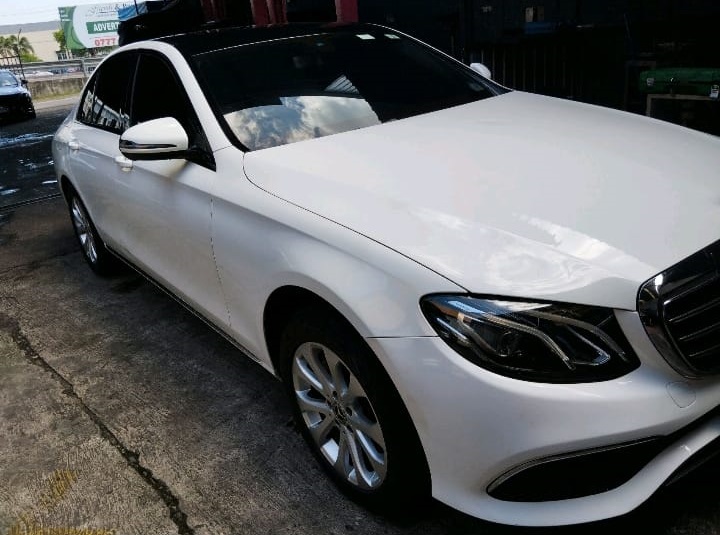
Step 1: Initial Inspection
Upon receiving the vehicle, technicians performed a visual and physical inspection of the suspension system. The goal was to pinpoint the root cause of the rattling and knocking sounds the customer reported.

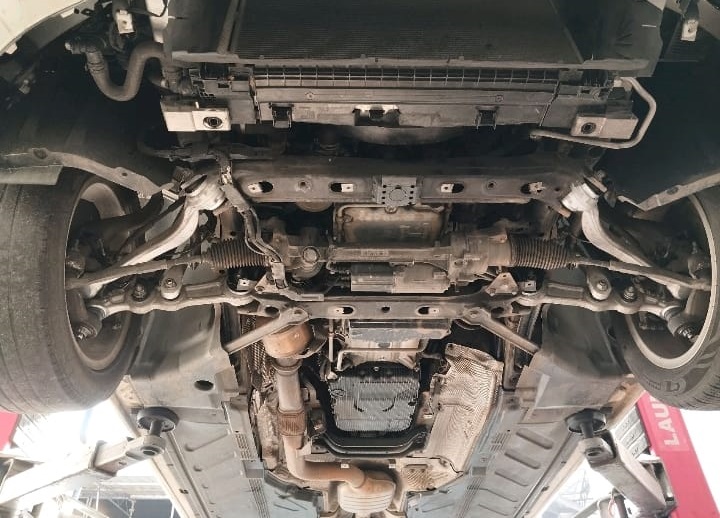
Findings included worn and damaged components in multiple areas of the front suspension system. These defects directly explained the excessive noise during driving.
Step 2: Diagnosed Suspension Issues
The inspection revealed deterioration in the following components:
- 1. Front Shock Absorbers : Responsible for absorbing bumps and ensuring smooth contact with the road. Worn absorbers create clunking noises and reduce ride quality.
- 2. Front Control Arms : Connect the wheel hub to the frame and manage wheel motion. Damaged arms can cause instability and metallic knocking.
- 3. Front Caster Arms : Stabilize the vehicle during cornering; deterioration contributes to both noise and handling issues.
- 4. Front Shock Mounts, Stoppers, and Boot Kit : Cushion the shock absorbers and reduce vibration. Worn mounts and stoppers often cause squeaks or rattles.
- 5. Front Sway Bar Links & Bushings : Critical for stability during turns. Worn bushings or loose links create creaking or clunking noises.
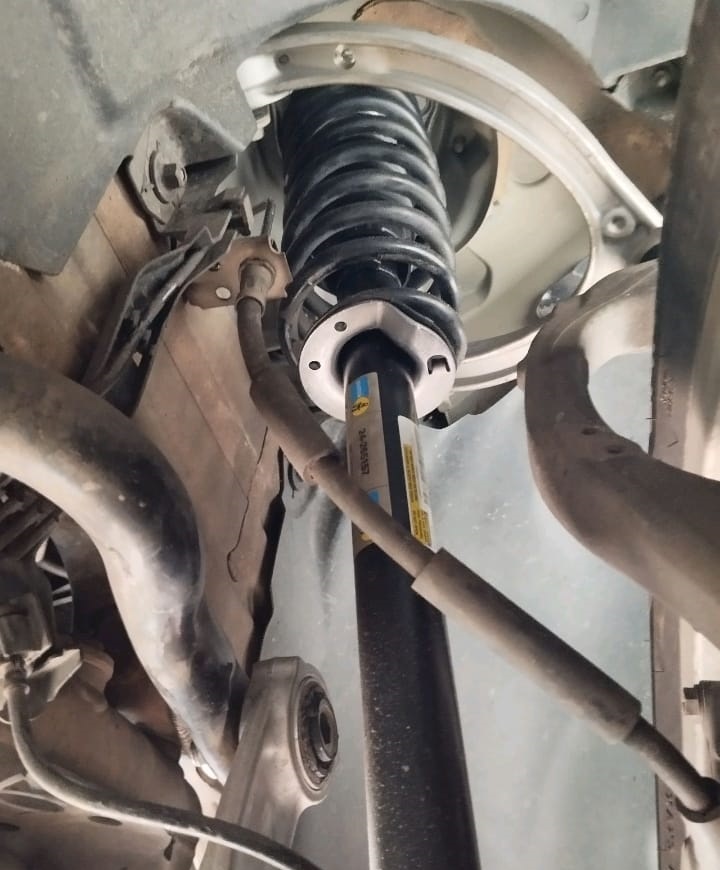
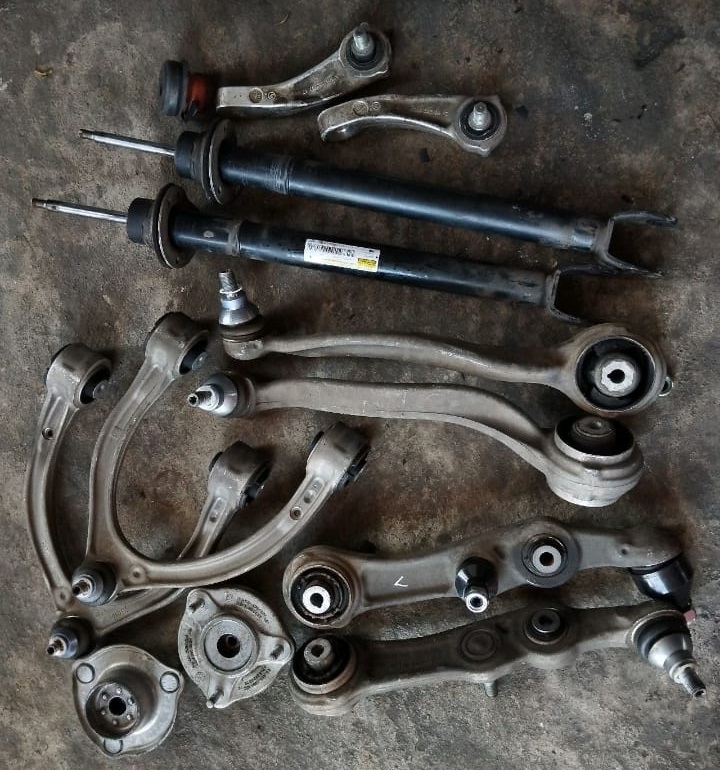
Step 3: Repair and Replacement Process
To eliminate the noise and restore safe operation, the following replacements were performed:
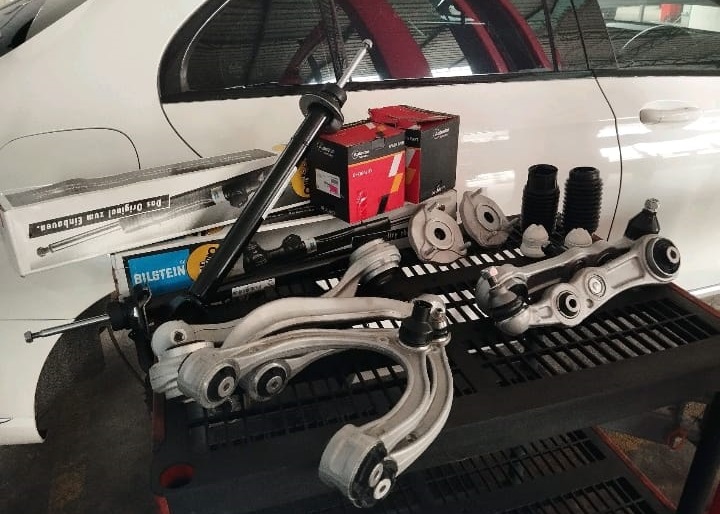
1. Front Shock Absorbers
- – Installed new OEM absorbers.
- – Restored smooth absorption of road impacts.
2. Front Control Arms
- – Replaced both front control arms.
- – Eliminated instability and knocking noises.
3. Front Caster Arms
- – Installed new caster arms to ensure stability during cornering.
4. Shock Mounts, Stoppers, and Boot Kit
- – Replaced mounts and stoppers that had deteriorated.
- – Protected the new shock absorbers from premature wear.
5. Front Sway Bar Links & Bushings
- – Replaced worn sway bar links and bushings.
- – Improved handling and eliminated rattling noises during turns.
Step 4: Testing and Final Verification
After the replacements:
- – The suspension noise was completely eliminated.
- – A test drive confirmed smooth operation, stable handling, and quiet performance over uneven roads.
- – The customer’s concern was fully resolved, and the E-Class W213 was restored to factory-like comfort.
Symptom –> Cause –> Fix Table
| Symptom | Likely Cause | Repair Solution |
|---|---|---|
| Knocking over bumps | Worn shock absorbers or mounts | Replace front shocks and mounts |
| Metallic rattling at low speeds | Damaged control arms or bushings | Replace control arms and bushings |
| Squeaking noise while turning | Worn sway bar links or bushings | Replace sway bar components |
| Vehicle unstable during cornering | Faulty caster arms | Replace caster arms and recalibrate |
| Excessive vibration in cabin | Failed shock stoppers/boot kit | Replace with OEM parts |
Explore More Mercedes Suspension Issues
For a deeper dive into suspension problems such as uneven ride height, AIRMATIC malfunctions, “Stop Vehicle Too Low” warnings, and vibration faults, visit our hub: Mercedes-Benz Suspension Issues – Symptoms, Causes & Fixes. There you’ll find grouped case studies, step-by-step diagnostics, symptom, cause, fix tables, and preventive tips to keep your Mercedes riding smoothly.
Why Timely Suspension Repair Matters
Ignoring suspension noise in a Mercedes-Benz can lead to:
- – Increased wear on related components (struts, bushings, control arms).
- – Reduced handling stability, especially during cornering or emergency braking.
- – Compromised safety, as uneven suspension can affect tire grip.
- – Costlier repairs if minor wear develops into complete component failure.
FAQs
Q: Is it safe to drive with suspension noise?
A: While the vehicle may still be drivable, it’s not safe long-term. Suspension faults affect stability and braking efficiency prompt repairs are recommended.
Q: What causes suspension noise in the Mercedes E-Class?
A: Common causes include worn shock absorbers, damaged control arms, failed bushings, or deteriorated mounts. Environmental factors like rough roads accelerate wear.
Q: How much does it cost to repair suspension issues in a W213?
A:
- – Shock absorber replacement: $800–$1,200 per pair
- – Control arm replacement: $400–$700 per side
- – Sway bar link and bushings: $200–$400
Costs vary depending on region and labor rates.
Q: How can I prevent suspension issues?
A:
- – Have the suspension inspected every 20,000 miles.
- – Replace worn boots early to protect struts.
- – Avoid potholes and rough terrain when possible.
- – Use only OEM-quality parts for replacements.
Q: Can suspension noise return after repair?
A: Not if all faulty components are replaced. However, neglecting related parts (like bushings when replacing struts) may cause noise to persist.
Conclusion
This case study of a Mercedes-Benz E-Class W213 with suspension noise demonstrates how thorough diagnostics and systematic repairs can restore performance.
By replacing front shocks, control arms, caster arms, mounts, stoppers, and sway bar components, the suspension noise was eliminated, and the car returned to delivering the smooth, quiet ride expected from a Mercedes.
The key takeaway: suspension noise is a warning sign. Addressing it promptly not only restores comfort but also ensures safety and prevents more expensive repairs.
Author
Written by Mercedes Expert
With years of hands-on experience diagnosing and repairing Mercedes-Benz systems, he brings technical depth and practical case studies to help car owners, technicians, and enthusiasts troubleshoot complex automotive issues. His work focuses on clear repair guides, OEM-level procedures, and knowledge-sharing to empower both professionals and drivers.
Last Updated: September 2025

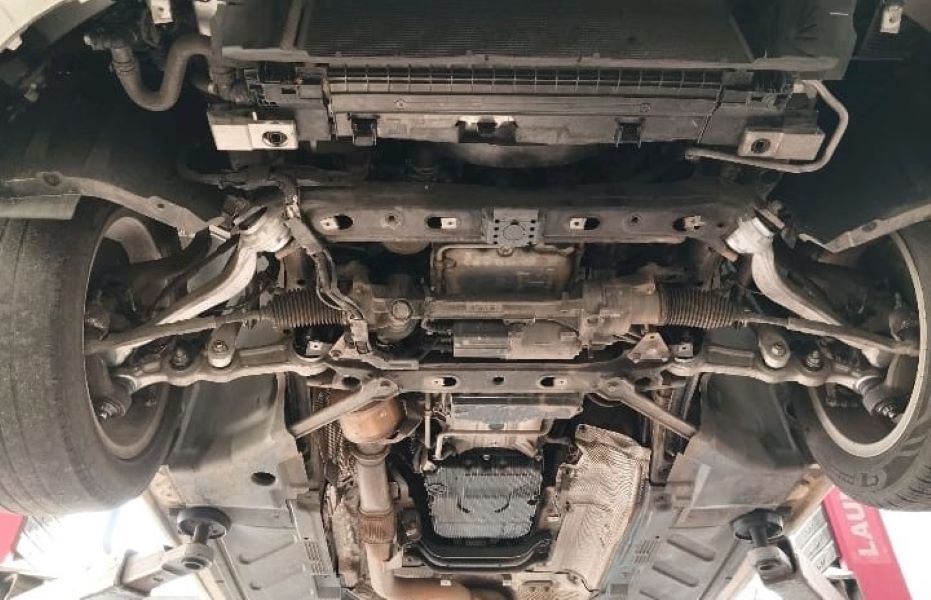
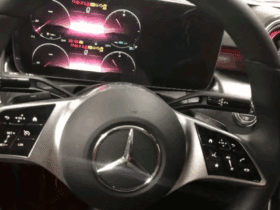
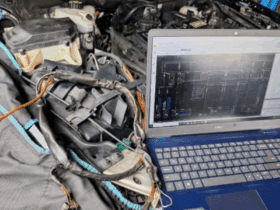
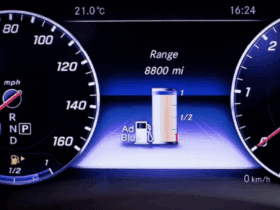
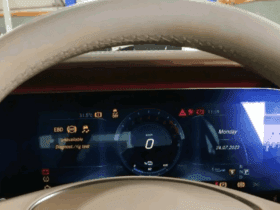
Leave a Reply